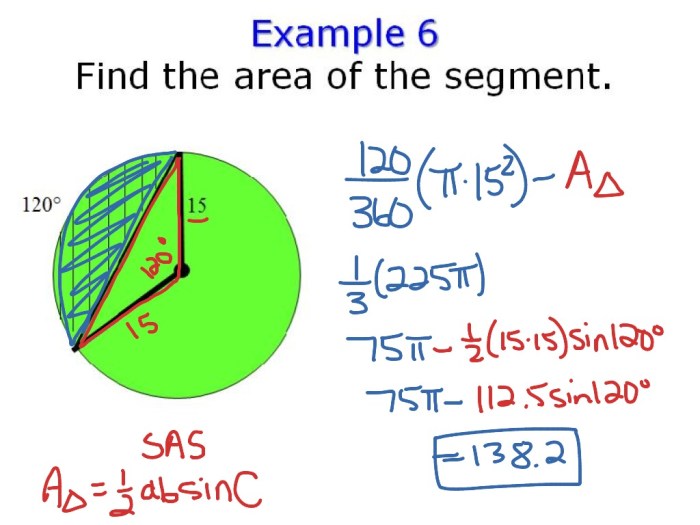The Arc Length and Sector Area Matching Activity Answer Key serves as an invaluable resource for students and educators alike, providing a comprehensive overview of these fundamental concepts in geometry. This key offers a clear and concise explanation of the purpose and relevance of the matching activity, empowering learners to grasp the intricacies of arc length and sector area calculations.
Throughout this guide, we will delve into the definitions, formulas, and real-world applications of both arc length and sector area. With the aid of carefully crafted examples and practice problems, we aim to solidify your understanding of these essential geometric concepts.
Arc Length and Sector Area Matching Activity Answer Key
The matching activity aims to reinforce students’ understanding of arc length and sector area formulas and their relationships with central angles in circles. By correctly matching the formulas, students can solidify their knowledge of these concepts.
Answer Key:
- Arc Length: s = rθ
- Sector Area: A = (1/2)r²θ
Arc Length: Arc Length And Sector Area Matching Activity Answer Key

Arc length (s) is the distance along the circumference of a circle intercepted by a central angle (θ) measured in radians. Its formula is:
s = rθ
where:
- r is the radius of the circle
- θ is the central angle in radians
Arc length is directly proportional to both the radius and the central angle. A larger radius or a larger central angle results in a longer arc length.
Real-World Applications of Arc Length:
- Measuring the distance traveled by a car on a circular track
- Calculating the circumference of a circular object
- Determining the length of a fence around a circular garden
Sector Area
Sector area (A) is the area of the region bounded by two radii and the intercepted arc of a circle. Its formula is:
A = (1/2)r²θ
where:
- r is the radius of the circle
- θ is the central angle in radians
Sector area is directly proportional to both the square of the radius and the central angle. A larger radius or a larger central angle results in a larger sector area.
Real-World Applications of Sector Area:, Arc length and sector area matching activity answer key
- Calculating the area of a pizza slice
- Determining the area of a circular sector used in architectural design
- Measuring the area of a pie chart representing a portion of data
Matching Activity Examples

| Arc Length Formulas | Sector Area Formulas |
|---|---|
| s = rθ | A = (1/2)r²θ |
| s = 2πr | A = 2πr² |
| s = (π/180)dθ | A = (π/360)dθ |
Matching Problems:
- Match the formula for arc length when the central angle is given in degrees to the formula for sector area when the central angle is given in radians.
- Match the formula for arc length when the radius is equal to the diameter to the formula for sector area when the central angle is 360 degrees.
Correct Matches:
- s = (π/180)dθ → A = (π/360)dθ
- s = 2πr → A = 2πr²
Additional Practice
Problems:
- Find the arc length of a circle with a radius of 10 cm and a central angle of 60 degrees.
- Calculate the sector area of a circle with a radius of 5 cm and a central angle of 120 degrees.
Solutions:
- s = rθ = 10 cm
- (60°
- π/180°) ≈ 10.47 cm
- A = (1/2)r²θ = (1/2)
- (5 cm)²
- (120°
- π/180°) ≈ 52.36 cm²
FAQ Overview
What is the purpose of the Arc Length and Sector Area Matching Activity?
The matching activity is designed to assess students’ understanding of the formulas and concepts related to arc length and sector area.
How can I use the Arc Length and Sector Area Matching Activity Answer Key?
The answer key provides correct matches for each pair in the matching activity, allowing students to check their answers and identify areas for improvement.
What are some examples of real-world applications of arc length and sector area?
Arc length is used in measuring the circumference of circles and the length of circular arcs, while sector area is used in calculating the area of sectors within circles.